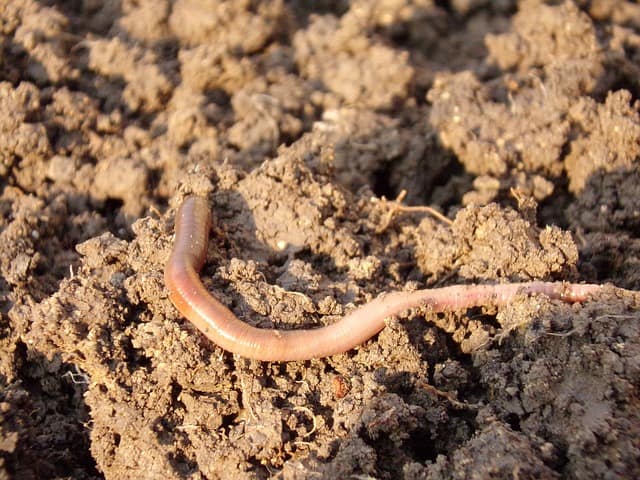The earthworm’s life cycle begins with an egg, as it does with many other creatures. Young earthworms develop in the egg until they are ready to hatch.
During the development of an egg, it is enclosed in a cocoon. This cocoon serves as the protective shell for the egg until it is ready to hatch and the cycle of life can begin anew. One cocoon can contain one to twenty eggs, depending on the species (but most species have only one egg). If you’re a gardener, you may wonder whether worms lay eggs or produce live young.
Unfortunately, witnessing an earthworm’s reproduction cycle is difficult because they live underground. These environmental organisms consume various organic materials where they acquire nutrition and play an essential role in decomposing organic matter.
This, in return, enhances your garden’s soil by increasing soil aeration, infiltrations, water movement, and plant growth. These are just some interesting facts about these creatures, and this post will answer a commonly vexed question about earthworms.
To know more about do earthworms lay eggs, read this article.
Do Earthworms Lay Eggs?

Their bodies produce amber-colored cocoons in which they lay their eggs. When premature eggs break free from their protective cocoons, they will become shriveled and die. Baby worms hatch inside the cocoon, which serves as a protective egg.
In general, between two and 20 earthworms hatch from each cocoon after about three weeks. Some earthworm species can produce 80 cocoons per year. A single earthworm can live for up to eight years, but most are eaten or killed before they reach that age. On average, earthworms live about one year.
Examine the suspected earthworm cocoon with a magnifying glass. Do not allow sunlight to penetrate the magnifying glass and project onto the cocoon for a prolonged period.
By doing so, you could cause damage to the cocoon or even cause the baby earthworms inside to die. Instead, view the cocoons through the magnifying glass and adjust them so they appear magnified.
Determine the size of the suspected cocoon. An earthworm cocoon is usually one centimeter in length. Identify your suspected cocoon by its color.
When new, earthworm cocoons are white, but they turn amber in color after a few hours. Look closely at the suspected cocoon to determine its shape. The cocoon of an earthworm is generally shaped like a lemon, although some are teardrop-shaped.
What Is The Average Number Of Eggs Laid By Earthworms?
Earthworms lay between fourteen and six cocoons each month under favorable conditions. These cocoons can contain between four and twenty eggs. In other words, between 20 and 120 young earthworms can hatch from cocoons per month. Of course, the number of hatchlings depends on the time of year, the temperature, and the humidity.
They will hatch months later since the cocoons with the eggs are in diapause (a state of suspended development). Earthworm eggs can enter a state of diapause because cocoons’ tough capsules protect them from harsh conditions that would harm adults. The young earthworms will soon hatch once the diapause phase is over and the harsh environmental conditions are no longer present.
Is it Common For Worms To Lay Eggs?

27 to 30 days is enough time for earthworms to lay eggs, and some species can lay eggs every seven to ten days. Every 50 to 60 days, the population of earthworms doubles thanks to their rapid reproduction and breeding power. There has also been evidence of earthworm populations doubling every three to six months in some species.
Only six months can be enough for eight earthworms to become 1,000 to 1,500 earthworms under ideal conditions. Eggs will hatch more rapidly and better at 26°C soil temperatures.
An Earthworm’s Egg Laying Process
The two worms will eventually separate after the sperm exchange occurs after the copulation (mating) and lay multiple eggs with the cocoons covering the eggs.
When an earthworm mates, its clitellar glands secrete a viscid and gelatinous layer as a cocoon layer, forming a broad membrane around the clitellum, preparing it for egg-laying. Upon hardening, the cocoon layer comprises a brutal elastic tube that includes the egg capsule. The rigid tube (cocoon) in which the soft eggs are enclosed protects them from damage.
What Is The Nesting Place Of Earthworms?
The eggs of earthworms will be laid deep within damp and moist soils with a soil temperature of at least 14°C to 26°C. It is usually best for eggs to hatch at a temperature of 24°C to 26°C.
Egg capsules are laid in the soil by earthworms, usually near a good source of food. At warmer temperatures, the eggs hatch faster than they do at a cooler temperature.
A young worm looks just like its parent after hatching, and it begins feeding on organic matter, microorganisms, algae, fungi, and bacteria deep inside the soil and grows. Young worms prefer to stay inside, hiding in the ground rather than coming out to the soil’s surface. Often seen feeding on the earth’s surface, they emerge only at night, just like adults.
See a similar post: How Long Should I Keep My Dog Off New Sod?
Summary
Do earthworms lay eggs? It is true that worms lay eggs or, more scientifically speaking, cocoons. It explains how worms lay eggs and answers questions about their reproduction and growth, so you don’t have to wonder how they multiply and grow. A part of the worm’s anatomy is called the clitellum, which looks like an orangey or light pink band separating it from the rest of the body.
Frequently Asked Questions
What are the steps involved in giving birth to an earthworm?
The sperm is passed from worm to worm and stored in sacs—a cocoon forms on each of our clitella. Eggs and sperm are deposited inside the cocoon after you exit the narrowing cocoon. In the aftermath of your exit, the cocoon closes, and fertilization occurs.
What is the life expectancy of earthworms?
It is scarce for earthworms to survive that long, but some species can live up to 8 years. After that, most of them die in other ways. Eggs hatch before the worms are expelled, so they can quickly spread to people before they live one year.
Humans lay eggs when worms are present?
They are primarily transmitted through contact with young worms in the soil. In the small intestine, the worms lay eggs after entering the body. Those eggs hatch before they are pooped out, and the worms may infect someone easily.

Hey, I’m Lisa and I’ve been an avid gardener for over 30 years. I love writing, talking and living in the garden! Feel free to connect with me on my socials below

